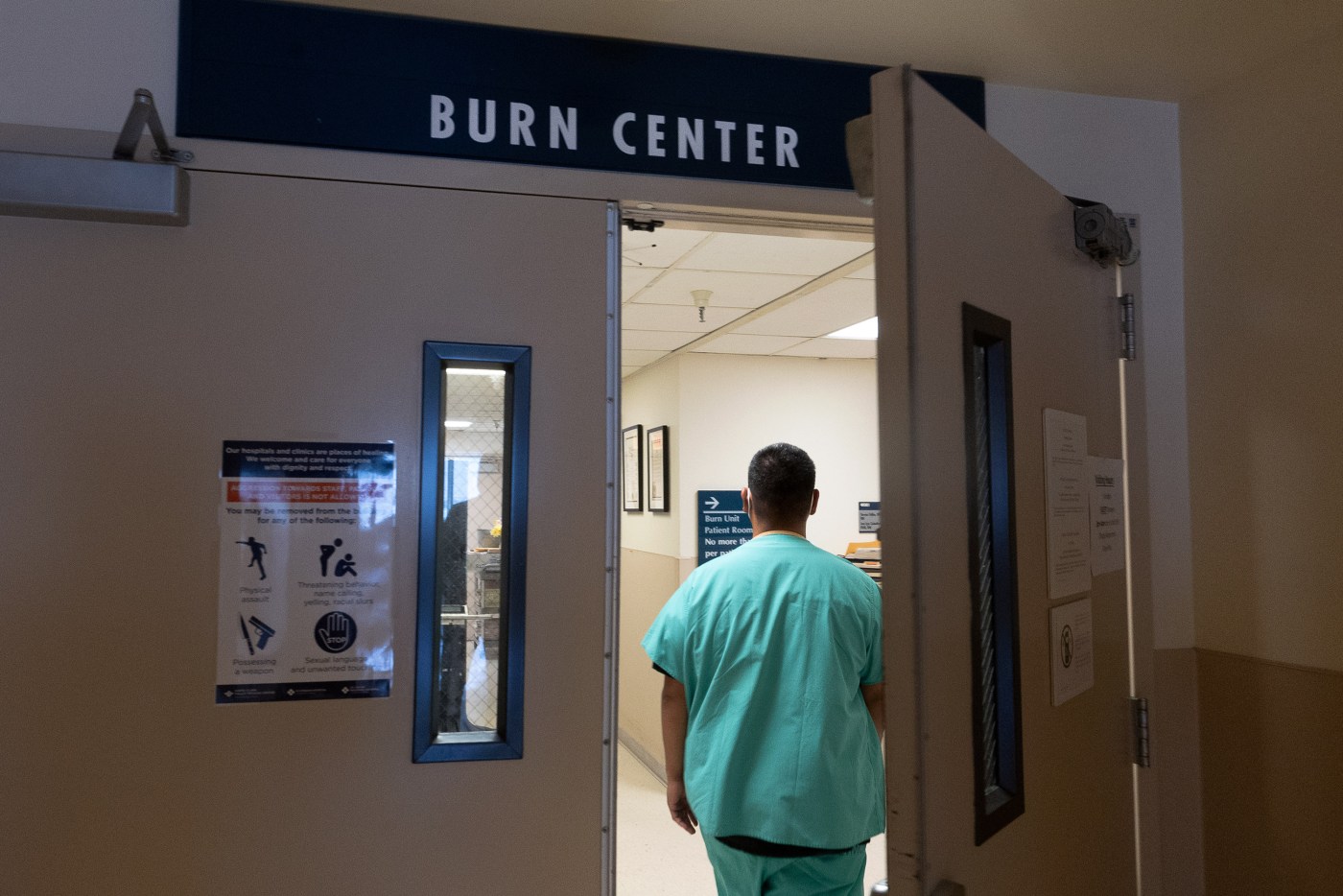Business
Santa Clara County Faces $223 Million Loss in Medicaid Revenues

Santa Clara County is set to lose $223 million in Medicaid revenues this fiscal year, primarily due to federal budget cuts initiated by President Donald Trump. This significant financial impact marks the beginning of what officials predict will be several challenging years for the county, which operates four public hospitals and 15 clinics. The cuts are a result of a larger Republican initiative that aims to reduce federal Medicaid funding by $1 trillion over the next decade.
With one in four residents relying on Medi-Cal, California’s version of the Medicaid program, the repercussions of these cuts are expected to be severe. County Executive James Williams emphasized that the loss of federal revenue has already triggered immediate cuts and freezes to Medicaid-related funding streams. These changes threaten the financial stability of health services that cater predominantly to low-income and disabled individuals.
Projected Financial Challenges Ahead
The impact of the federal budget cut is anticipated to worsen in the coming years, with an estimated $506 million loss in Medicaid revenues expected during the 2026-2027 fiscal year. As officials scramble to address the immediate financial gap, they are looking for $200 million in cost savings within the healthcare system. This plan will undergo scrutiny and approval during the Board of Supervisors’ mid-year budget review in February.
“This is the most significant mid-year adjustment we have faced in over a decade,” Williams remarked, indicating the urgency of the situation. He added, “We need to move forward with at least an initial piece of action now, given we’re facing hundreds of millions more during the upcoming budget process.”
Cuts to the healthcare budget may include reductions in services and personnel, with county officials examining potential redundancies. The Santa Clara Valley Healthcare System is particularly vulnerable, as it serves a large percentage of Medi-Cal enrollees.
Service Restructuring and Community Impact
Recent decisions reflect the need for financial reallocation within the county’s healthcare services. For instance, the Regional Medical Center in East San Jose recently resumed labor and delivery services after a five-year hiatus, but this has come at the cost of closing the maternity ward at O’Connor Hospital. Paul Lorenz, CEO of Santa Clara Valley Healthcare, explained that the shift was data-driven, aimed at improving service delivery for the community.
Despite this restructuring, Lorenz warned that residents should be prepared for longer wait times and other immediate repercussions. “There will be implications that we may feel immediately, but many of which we will not encounter or experience until six months or a year from now,” he noted.
In an effort to mitigate the financial fallout, county officials are hopeful about the upcoming vote on Measure A on November 4. This proposed sales tax increase could generate an estimated $83 million for the current fiscal year, potentially reducing the gap left by federal revenue losses to $139 million. Over a full fiscal year, the measure could yield $330 million in revenue.
Board of Supervisors President Otto Lee expressed concerns regarding the potential impact of continued cuts on essential services. “We have worked incredibly hard over the past few years to protect many of our services at risk of being cut,” he stated, highlighting the importance of maintaining support for vulnerable populations.
As the fiscal challenges mount, Supervisor Margaret Abe-Koga acknowledged that the county has already made significant cuts in recent years, targeting vacant positions and freezing hiring. She emphasized the need for a thorough examination of the budget to identify new revenue sources and prioritize essential services.
Supervisor Susan Ellenberg shared her apprehension regarding the future, stating that the scale of the budget gap suggests that maintaining all programs may not be feasible. “Having to dial back to just the mandated work represents really a low point in the history of our county government,” she remarked.
In light of these developments, the county is at a critical juncture, tasked with navigating substantial financial challenges while striving to provide essential healthcare services to its residents. As discussions continue and the vote on Measure A approaches, the future of Santa Clara County’s healthcare landscape remains uncertain.
-

 Business1 week ago
Business1 week agoIconic Sand Dollar Social Club Listed for $3 Million in Folly Beach
-

 Health1 week ago
Health1 week agoPeptilogics Secures $78 Million to Combat Prosthetic Joint Infections
-

 Politics1 week ago
Politics1 week agoAfghan Refugee Detained by ICE After Asylum Hearing in New York
-

 Science1 week ago
Science1 week agoResearchers Achieve Fastest Genome Sequencing in Under Four Hours
-

 Lifestyle1 week ago
Lifestyle1 week agoJump for Good: San Clemente Pier Fundraiser Allows Legal Leaps
-

 Health1 week ago
Health1 week agoResearcher Uncovers Zika Virus Pathway to Placenta Using Nanotubes
-

 World1 week ago
World1 week agoUS Passport Ranks Drop Out of Top 10 for First Time Ever
-

 World1 week ago
World1 week agoRegional Pilots’ Salaries Surge to Six Figures in 2025
-

 Entertainment1 week ago
Entertainment1 week agoJennifer Lopez Addresses A-Rod Split in Candid Interview
-

 Top Stories6 days ago
Top Stories6 days agoChicago Symphony Orchestra Dazzles with Berlioz Under Mäkelä
-

 Science1 week ago
Science1 week agoMars Observed: Detailed Imaging Reveals Dust Avalanche Dynamics
-

 World1 week ago
World1 week agoObama Foundation Highlights Challenges in Hungary and Poland









